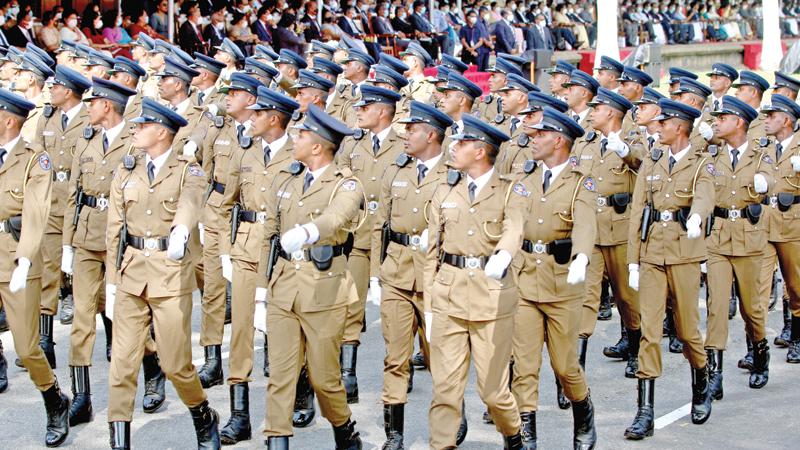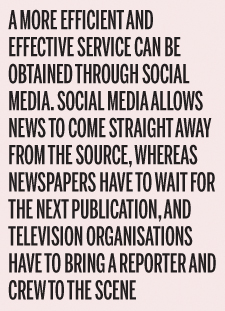
The police is the official service responsible for protecting the people of a country. By 1806, the British passed an ordinance for police duties outside the city of Colombo. By 1833, a government-paid police service had begun, and a group of 165 officers was on duty to provide services to the population of Colombo, which was about 39,000 at that time.
In 1843, the Governor was empowered to set up police stations anywhere on the island. By 1863, 48 police stations had been set up across the country. Richard Aluwihare was appointed as the 11th Inspector General of Police as well as the first Sri Lankan Inspector General of Police in 1947.
After Independence in 1948, a larger number of police stations were set up and various functions were added to suit the changes that took place in the country. The police directly faced all the protests and riots against the government. Police stations became the first targets in the anti-state revolt of 1971. It was because of such an environment that the police, which were created without military characteristics, had to carry out their duties armed with weapons.
This situation became more intense during the battle against the LTTE. Similar cases were seen during the recent struggles. As of 2016, there were 438 police stations in operation in Sri Lanka, which have now been increased to 605. The Sri Lanka Police currently consists of 86,698 officers. While the Police Special Task Force consists of over 8,300 officers.
Today, the services of the Sri Lanka Police have expanded to various fields, including crime prevention and investigation, drug control, traffic control, road safety, and providing legal services with clearance reports. So far, the number of officers who have died in the line of duty is 3,039. Nearly 2,600 of them lost their lives due to terrorist acts. The number of officers injured in the operation is 1,571. Four hundred and forty one officers have died performing normal police duties.
We recognise the police as one of the agencies in the new criminal defence system. As long as wrongdoing in society, there will be a great need for a police force.
Lapses
 It is a matter that needs to be examined to see whether the duty of the police, which turns 156 years this year, was properly evaluated. Recently, one of the most popular programs on the Police Media YouTube channel was a must-see lecture for parents by Chief Inspector Manoj Samarasekera. It was a socio-psychological commentary on the behaviour patterns of children and parents in ancient times.
It is a matter that needs to be examined to see whether the duty of the police, which turns 156 years this year, was properly evaluated. Recently, one of the most popular programs on the Police Media YouTube channel was a must-see lecture for parents by Chief Inspector Manoj Samarasekera. It was a socio-psychological commentary on the behaviour patterns of children and parents in ancient times.
Similarly, police sergeant D.A.C. Buddhika Kumara, who faced a fatal confrontation with two men who were ready to rob over Rs. 22.3 million in the Tambuttegama area, is an officer to be admired. But the sad fact is that some media institutions that highlight the lapses of the police or do not appreciate the actions of the police.
Therefore, the need for a proper police media has now arisen. In several cases, provision had been allocated for it, but due to some unknown reasons, it has not been implemented. But recently we have seen how the police have maintained good public relations. The best example of that is Police media spokesperson Ajith Rohana.
Every organisation is made up of people. Good and bad things can happen. It is common for news of bad things to spread faster than good things. Mistakes too could be made by police officers. But news of such lapses spread rapidly throughout society, along with the name of the police officer. Such an incident may have happened during work done for the benefit of society. But it is detrimental to the police. In such cases, various media institutions can be seen working against the police. It is to show that mass media is constantly on the side of the people. If there is a media that works on the side of the police, people will be able to see facts fairly.
Even though the Sri Lanka Police has a YouTube channel called Police Media on the internet, there is a gap in getting that information to the public because the entire Sri Lankan community is not yet connected to new media. In European countries there are police television and radio channels. There are times when information is presented about certain operations carried out by the police.
Such presentations may be in the form of documentaries in the form of films or television dramas, or in the form of news. It is presented in a way that reflects the skills of the officers during raids. Here, goodwill can be created between the people and the police.
It can also create job satisfaction for police officers. A system could be developed to respond to criticism against the police in other media. By this respect for the police could be maintained among the people.
Training
If a proper Police media unit is set up, it should be organised into several sections.
Police officers should be trained in media reporting to get news about police intervention on a daily basis from departments such as Crime Division, Traffic Division, Children and Women Division, Bribery or Corruption Division, and Narcotics Division, making the most important and subtle moments of those events into films and bringing them to the attention of the people.
It will be possible to attract efficient people to the police media unit and creative competitions, such as short films, that reflect the service rendered by the police to the people could be organised. The public can be informed about how the police are always paying attention to crime and reality programs and programs to highlight the sports, cultural and other skills of the police officers too could be telecast
New media platforms linked to the police media unit could be used, and propaganda activities can be carried out through new media.
Social media
A more efficient and effective service can be obtained through social media. Social media allows news to come straight away from the source, whereas newspapers have to wait for the next publication, and television organisations have to bring a reporter and crew to the scene. So social media is super-fast.
While most traditional forms of communication are one-way, social media facilitates conversations and interactions between users. By adding social media to the mix of communication channels, law enforcement agencies can connect with audiences that would normally be difficult to reach. The police obviously can’t be everywhere. Therefore, it is essential to prepare methods to reach the people quickly through social media, and the attention of the authorities should be directed to this.
The most suitable and easiest medium for that is social media. For this, only employees with skills and a creative mind are needed. Because no matter how much work is done, if the public has a negative attitude toward the police, no amount of work will be of any use. So public relations, good will, reputation, and image are the most important things for the police. This is the right time to spend time on that. The police should no longer be strangers to social media applications such as YouTube, Instagram, and Facebook Police should turn to platforms where people can reach them quickly.
And they need to become more strategic in the use of social media and public relations tactics. Providing social media and media/public relations training to the entire team is a must. They need to be professional. law enforcement officers willing to work in a highly stressful environment, and sometimes the way officers communicate internally with each other is not well-suited for public communications.
Feedback
From Facebook and Twitter and other social media posts to all messaging on the department’s website, everything should be done with utmost sensitivity to the professionalism and importance of the overall mission. They always need to be careful. They have to “look at it from the public’s perspective” and analyse how their message is being received. They must regularly ask colleagues for feedback on specific social media and website items before posting live ones. Effective messaging often follows a professional yet friendly, helpful, and community-minded tone.
When using social media, whether for public relations or to get information to the news media, law enforcement agencies must understand that communication cannot be a one-way street. “It should be a two-way communication platform.” And the goal of a law enforcement agency should be to be the next viral sensation. They need to be out there promoting what they do and how to do it well, keeping it professional.
They need to be authentic, honest, and polite and speak in a professional, courteous manner avoiding technical jargon. Provide worthwhile information and perspective, avoid plagiarism at all costs, document all sources, and give credit where credit is due. Avoid posting anything offensive, defamatory, or potentially harmful or offensive. They should not post any material that may be considered defamatory or discriminatory. They should never use inappropriate language; or harass or threaten anyone. Online communication is essential nowadays. It is a new aspect of public safety, so it is essential to pay attention to it.
